Teaching your dog tricks is a fun and rewarding way to bond with them and provide mental stimulation. Here are a few tips to help you teach your dog tricks:
1. Start with basic commands: Before teaching tricks, ensure your dog understands basic commands like "sit," "stay," and "come." These foundational commands will make it easier for them to learn new tricks.
2. Use positive reinforcement: Reward-based training works best for teaching tricks. Use treats, praise, and affection to reward your dog for successfully performing a trick. Positive reinforcement encourages them to repeat the behavior.
3. Break it down: Break the trick into small, manageable steps. Teach one step at a time and gradually build upon each step as your dog progresses. For example, if you're teaching them to roll over, start by getting them to lie down, then gradually introduce the rolling motion.
4. Be patient and consistent: Training takes time and repetition. Practice the trick in short, frequent sessions, and be patient with your dog's progress. Consistency in your training approach and cues will help them understand what you expect.
5. Use hand signals or visual cues: Dogs are highly responsive to visual cues. Use hand signals or specific gestures to accompany verbal commands. This will help your dog understand and respond to the trick even when you're not using verbal cues.
6. Keep sessions fun and engaging: Make training sessions enjoyable for both you and your dog. Use a happy, excited tone of voice, incorporate playfulness, and use toys or props if applicable to the trick. Keep the atmosphere positive and upbeat.
7. Practice in different environments: Once your dog has learned a trick in a controlled environment, gradually introduce distractions and practice the trick in different locations. This will help your dog generalize the behavior and perform the trick in various situations.
8. End on a positive note: Always end training sessions on a positive note, even if your dog hasn't fully mastered the trick. Celebrate their progress and reinforce the behavior they have learned. This leaves them eager and motivated for future training sessions.
Remember to be patient, consistent, and reward your dog's efforts. Training should be a positive experience for both of you, and with time, practice, and plenty of encouragement, your dog will become a skilled trick performer.
N.1 Trick:
Shake Hands
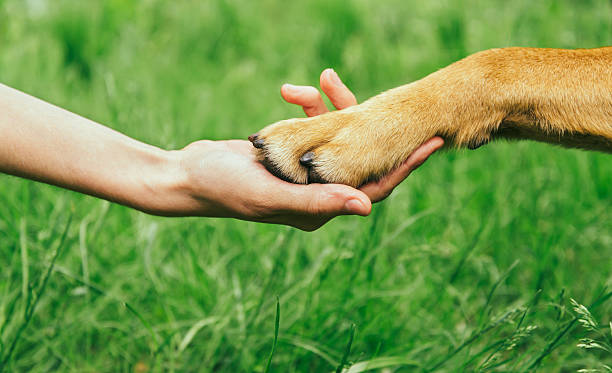
Training your dog to shake hands, also known as giving a paw, can be a charming and endearing trick. Here's a step-by-step guide on how to teach your dog to shake hands:
1. Start in a calm environment: Begin the training in a quiet and distraction-free area, such as your home or backyard. This will help your dog focus on the training.
2. Get your dog's attention: Hold a treat in your hand and show it to your dog. Allow them to sniff and become interested in the treat.
3. Offer your hand: Once your dog is focused on the treat, close your hand around it and present it to them at their shoulder level or slightly below.
4. Say the command: As you offer your closed hand, give the verbal command, such as "Shake" or "Paw." Use a clear and consistent command each time you want your dog to shake hands.
5. Encourage pawing: Your dog may try different behaviors initially, such as sniffing or pawing at your hand. Wait patiently until they lift their paw to touch your hand. As soon as they make contact, praise them with verbal cues like "Good job!" or "Yes!"
6. Reward and repeat: Immediately after your dog touches your hand with their paw, reward them with the treat and praise. Repeat this process multiple times, encouraging them to lift their paw higher and touch your hand more consistently.
7. Add the release cue: Once your dog is consistently offering their paw, add a release cue such as "Okay" or "Free." This will let them know they can retract their paw.
8. Practice without treats: Gradually phase out the treats and rely more on verbal praise and physical affection as rewards. However, occasional treats can still be given to reinforce the behavior.
9. Generalize the behavior: Practice the shake hands command in different locations and with various distractions to help your dog generalize the behavior. This will ensure they can perform the trick in different situations.
10. Maintain consistency: Reinforce the shake hands command regularly to keep the behavior strong. Incorporate it into your dog's training sessions or daily interactions to maintain their skills.
N.2 Trick:
Wave
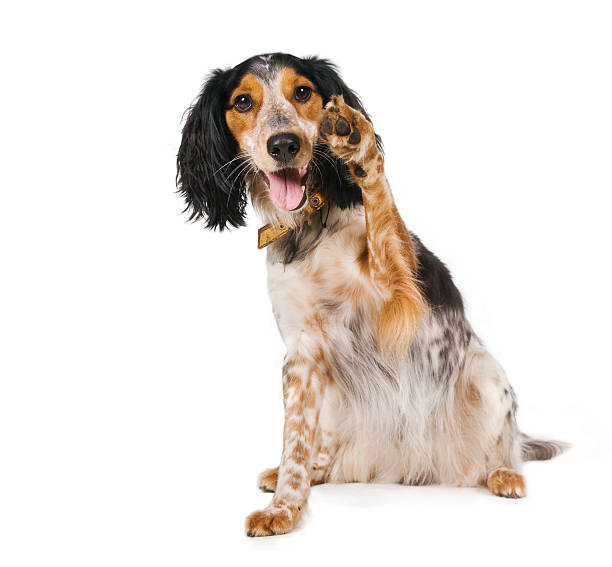
Training your dog to wave, also known as giving a high-five or waving their paw, can be a fun and adorable trick. Here's a step-by-step guide on how to teach your dog to wave:
1. Start with a sit or down position: Begin the training with your dog in a sit or down position. This will help establish control and focus during the training session.
2. Get your dog's attention: Hold a treat in your hand and show it to your dog. Allow them to sniff and become interested in the treat.
3. Present your hand: Once your dog is focused on the treat, lift your hand slightly higher than their shoulder level, with your palm facing towards them.
4. Use a verbal cue: Give the verbal command, such as "Wave" or "High-five," as you present your hand. Use a clear and consistent command each time you want your dog to wave.
5. Encourage pawing motion: Your dog may initially try different behaviors, such as pawing at your hand or touching it with their nose. Be patient and wait for them to make contact with their paw.
6. Reward and praise: As soon as your dog lifts their paw and makes contact with your hand, praise them with verbal cues like "Good job!" or "Yes!" and immediately reward them with the treat.
7. Practice and repetition: Repeat the process several times, encouraging your dog to lift their paw higher and touch your hand consistently. Gradually increase the duration of paw contact before giving the reward.
8. Add the release cue: Once your dog is consistently waving, add a release cue such as "Okay" or "Free." This lets them know they can retract their paw.
9. Eliminate the treat: Over time, reduce the reliance on treats and rely more on verbal praise and physical affection as rewards. However, occasional treats can still be given to reinforce the behavior.
10. Generalize the behavior: Practice the wave command in different locations and with various distractions to help your dog generalize the behavior. This will ensure they can perform the trick in different situations.
11. Maintain consistency: Reinforce the wave command regularly to keep the behavior strong. Incorporate it into your dog's training sessions or daily interactions to maintain their skills.
N.3 Trick:
Smile

Training a dog to smile can be a fun and endearing trick. Here's a step-by-step guide on how to teach your dog to smile:
1. Choose a relaxed environment: Find a quiet and comfortable space where your dog feels relaxed and secure. This will help create a positive learning environment.
2. Get your dog in a happy mood: Engage your dog in play or offer them a favorite treat to put them in a happy and relaxed state.
3. Lift their lips gently: With your dog facing you, use your fingers to gently lift their lips on both sides, exposing their teeth. Be very gentle and ensure you are not causing any discomfort or pain.
4. Use a verbal cue: As you lift their lips, say a cue word or phrase such as "Smile" or "Say cheese." Use a clear and consistent command each time you want your dog to smile.
5. Reward and praise: As soon as you lift their lips and they show their teeth in a smile-like expression, praise them enthusiastically and immediately give them a reward such as a treat or verbal praise.
6. Repeat the process: Practice this exercise regularly, gradually fading the need to lift their lips with your fingers. Instead, use the verbal cue to prompt them to "smile."
7. Shape the behavior: Once your dog starts associating the verbal cue with the action of lifting their lips, start shaping the behavior by rewarding them for any attempt to lift their lips or show their teeth in a relaxed manner.
8. Capture natural smiles: Observe your dog throughout the day, and whenever they naturally show a relaxed and happy expression with their lips up, use the verbal cue and reward them. This will reinforce the behavior and encourage them to offer the smile more frequently.
9. Practice in different settings: Once your dog has grasped the concept, practice the smile command in various environments and situations to generalize the behavior. This will help your dog understand that the cue applies everywhere, not just in a specific location.
10. Maintain positive reinforcement: Continue to reinforce the behavior with rewards and praise, but gradually reduce the frequency of treats. Verbal praise, affection, and the opportunity to engage in a favorite activity can become the primary rewards.
N.4 Trick:
Spin
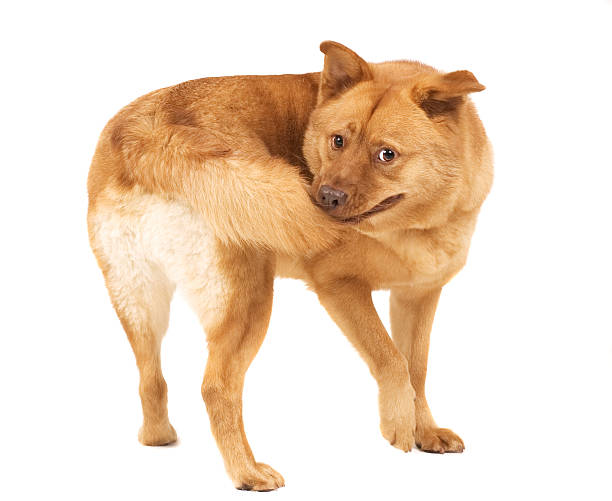
Training your dog to spin can be a fun and impressive trick. Here's a step-by-step guide on how to teach your dog to spin:
1. Start with a lure: Hold a treat in your hand and let your dog see and smell it. Slowly move the treat in a circular motion close to their nose, encouraging them to follow it. Gradually increase the size of the circle to get them to turn their body.
2. Add a command: As your dog follows the treat and starts to turn, introduce a verbal command like "spin" or "twirl." Repeat the command each time you lure them into the spin.
3. Reinforce with a reward: Once your dog completes a full spin, praise and reward them with the treat. Use positive reinforcement to let them know they did a good job.
4. Repeat and practice: Repeat the process several times, gradually fading out the lure and relying more on the verbal command. Use consistent hand gestures or cues to accompany the command, such as a sweeping motion of your hand in the direction you want your dog to spin.
5. Practice in both directions: Once your dog understands the concept of spinning, practice the trick in both clockwise and counterclockwise directions. Use the same process of luring, command, and reward for each direction.
6. Generalize the behavior: Practice the spin trick in different locations and with varying distractions. This will help your dog generalize the behavior and perform the spin command in different situations.
7. Reinforce and perfect: Continue to reinforce the spin command with rewards and praise each time your dog performs the trick correctly. With consistent practice, your dog will become more proficient at spinning on command.
N.5 Trick:
Snoot
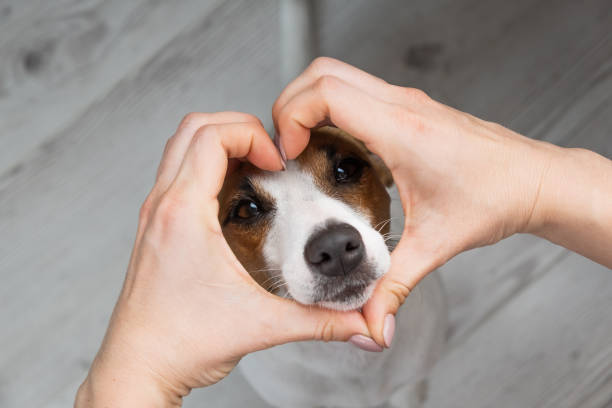
Training your dog to "snoot" or touch their nose to your hand or a target can be a fun and interactive trick. Here's a step-by-step guide on how to teach your dog to snoot:
1. Choose a quiet and distraction-free environment: Find a calm area where you and your dog can focus on the training session without interruptions.
2. Hold out your hand or a target object: Start by extending your hand or an object with a flat surface, such as a sticky note or a small lid, towards your dog's nose.
3. Use a verbal cue: As you present your hand or the target object, use a consistent cue word or phrase such as "Snoot" or "Touch." Say the cue in an enthusiastic and encouraging tone.
4. Encourage your dog to touch: Slowly move your hand or the target object towards your dog's nose. As your dog shows interest and begins to investigate, allow them to make contact with their nose.
5. Reward and praise: As soon as your dog touches their nose to your hand or the target object, praise them with verbal cues like "Good job!" and immediately provide a reward such as a treat or a favorite toy.
6. Repeat the process: Practice the snoot training exercise repeatedly, gradually increasing the distance between your hand or the target object and your dog's nose. Be patient and give your dog time to understand the desired behavior.
7. Add the cue word: Once your dog consistently touches their nose to your hand or the target object, start adding the cue word or phrase just before they make contact. This helps them associate the verbal cue with the action.
8. Generalize the behavior: Practice the snoot trick in different locations and with various target objects to help your dog understand that the cue applies in various situations. This helps them generalize the behavior and perform it on command.
9. Shape and refine the behavior: Once your dog understands the concept of snooting, you can shape the behavior further by introducing different targets or adding distance. You can also teach them to snoot specific objects or people upon command.
10. Practice and maintain: Regularly reinforce the snoot trick by incorporating it into your training sessions or daily interactions with your dog. Keep the training sessions short and fun, and always end on a positive note.
N.6 Trick:
Take a bow
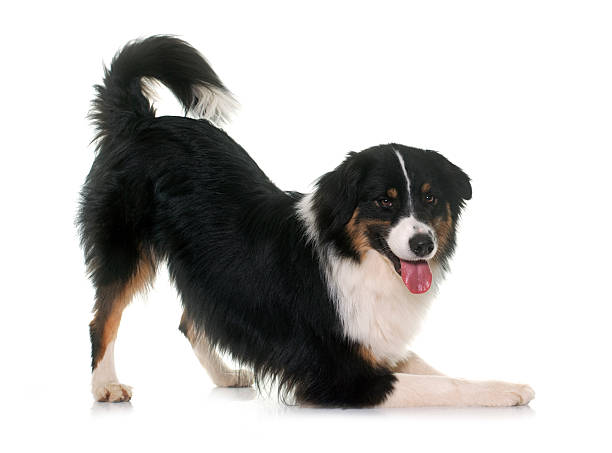
Training your dog to take a bow is a fun and impressive trick. Here's a step-by-step guide on how to teach your dog to take a bow:
1. Start with a treat: Hold a treat in front of your dog's nose to grab their attention.
2. Move the treat downwards: Slowly lower the treat towards the ground, between your dog's front paws. This should encourage your dog to follow the treat with their head.
3. Capture the behavior: As your dog follows the treat and lowers their front end towards the ground, say the command "Bow" or any other cue you prefer. Timing is crucial here. You want to say the command just as your dog is naturally bowing.
4. Reward and praise: Once your dog successfully takes a bow, immediately praise and reward them with the treat. Use an enthusiastic tone to let them know they've done a great job.
5. Repeat and add the cue: Practice the bowing motion several times, using the treat as a lure and saying the cue word just as your dog begins to bow. Gradually reduce the dependence on the treat by rewarding intermittently and eventually phasing it out.
6. Shape and refine the behavior: Once your dog understands the concept of taking a bow, you can begin to shape and refine the behavior. Add a hand signal, such as a sweeping motion with your hand towards the ground, to accompany the verbal cue. This will help your dog associate the hand signal with the bowing action.
7. Practice in different locations: Practice the bowing trick in various locations and environments to help your dog generalize the behavior. Start by practicing in a familiar and quiet area, then gradually introduce distractions and different surfaces.
8. Reinforce and maintain the trick: Regularly reinforce the bowing behavior by incorporating it into your training sessions or when interacting with your dog. Keep the sessions short and positive, and always end on a high note.
9. Add duration and precision: Once your dog is consistently taking a bow, you can work on increasing the duration of the bowing position. Encourage your dog to hold the position for a few seconds before rewarding them. You can also work on refining the bow by shaping it to be deeper and more pronounced
10. Show off and have fun: Once your dog has mastered the bow, you can showcase their new trick to friends and family. Remember to always reward and praise your dog for their efforts, and make training a positive and enjoyable experience for both of you.
N.7 Trick:
Play dead
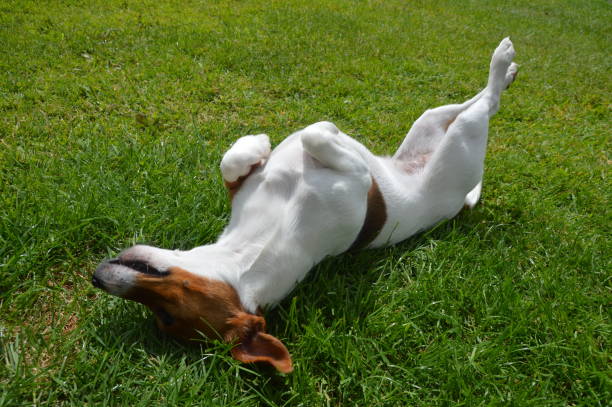
Training your dog to play dead is a fun and entertaining trick. Here's a step-by-step guide on how to teach your dog to play dead:
1. Start with a "down" command: Begin by teaching your dog to lie down on command. Practice this command until your dog responds reliably and comfortably assumes the down position.
2. Add the "bang" cue: Once your dog is comfortable with the down command, it's time to add the cue for playing dead. Choose a cue word like "bang" or use a finger gun gesture. Say the cue word or perform the gesture just before giving the "down" command.
3. Introduce the trick: With your dog in the down position, hold a treat close to their nose and slowly move it towards their shoulder, leading them to roll onto their side. As they roll onto their side, say the cue word "bang" and reward them with the treat.
4. Reward and praise: Immediately reward your dog with praise and additional treats when they successfully roll onto their side. Use an enthusiastic tone to let them know they've done a great job.
5. Repeat and reinforce: Practice the sequence of commands and reward your dog each time they roll onto their side in response to the "bang" cue. Be patient and consistent during the training process.
6. Add duration and release cue: Once your dog consistently plays dead by rolling onto their side, you can work on adding duration to the trick. Gradually increase the time they remain in the "dead" position before releasing them with a release cue, such as "okay" or "release."
7. Generalize the trick: Practice the play dead trick in different locations and with varying distractions to help your dog generalize the behavior. This will ensure they can perform the trick in any situation.
8. Remove the treat lure: As your dog becomes more proficient, gradually reduce the dependence on the treat lure. Use the cue word and hand gesture alone to elicit the play dead behavior. Remember to continue rewarding and praising your dog for their successful performance.
9. Maintain the trick: Once your dog has mastered playing dead, make sure to reinforce and practice the trick regularly to keep their skills sharp. Incorporate it into your training sessions or show it off as a fun party trick.
N.8 Trick:
Beg
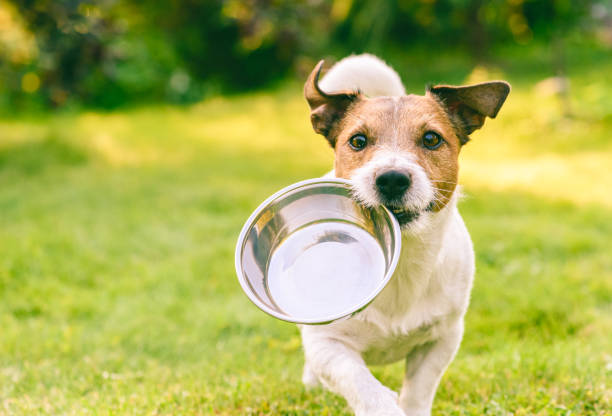
Training your dog to beg is an adorable and attention-grabbing trick. Here's a step-by-step guide on how to teach your dog to beg:
1. Start with a sitting position: Begin by teaching your dog to sit on command. Practice this command until your dog responds reliably and comfortably assumes the sitting position.
2. Introduce the treat: Hold a treat in your hand and let your dog see and smell it. Slowly raise the treat above your dog's head, slightly out of reach. As your dog follows the treat with their nose and lifts their front paws off the ground, they will naturally assume a begging position.
3. Add the cue word: Just as your dog lifts their front paws off the ground, say the cue word "beg" or any other word you choose. The timing is crucial, as you want to associate the cue word with the desired behavior.
4. Reward and praise: Once your dog is in the begging position, give them the treat as a reward. Make sure to offer plenty of verbal praise and enthusiastic reinforcement to let your dog know they've done well.
5. Repeat and reinforce: Practice the sequence of commands, cue word, and reward each time your dog lifts their front paws and assumes the begging position. Be consistent and patient during the training process.
6. Add duration and release cue: Once your dog is comfortable with the initial begging position, work on adding duration to the trick. Gradually increase the time they remain in the begging position before releasing them with a release cue, such as "okay" or "release."
7. Generalize the trick: Practice the beg trick in different locations and with varying distractions to help your dog generalize the behavior. This will ensure they can perform the trick in any situation
8. Remove the treat lure: As your dog becomes more proficient, gradually reduce the dependence on the treat lure. Use the cue word alone to elicit the begging behavior. Remember to continue rewarding and praising your dog for their successful performance.
9. Maintain the trick: Once your dog has learned to beg, make sure to reinforce and practice the trick regularly to keep their skills sharp. Incorporate it into your training sessions or show it off as a fun party trick.







